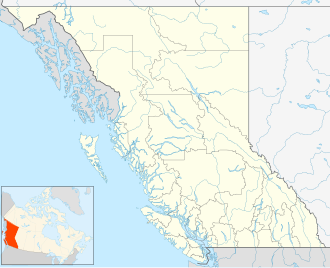 West side of Smith Island as seen from the northern approach to Marcus Passage | |
| Geography | |
|---|---|
| Coordinates | 54°09′03″N130°13′26″W / 54.15083°N 130.22389°W |
Smith Island is an island just north of the mouth of the Skeena River in the North Coast region of British Columbia, Canada. [1]
